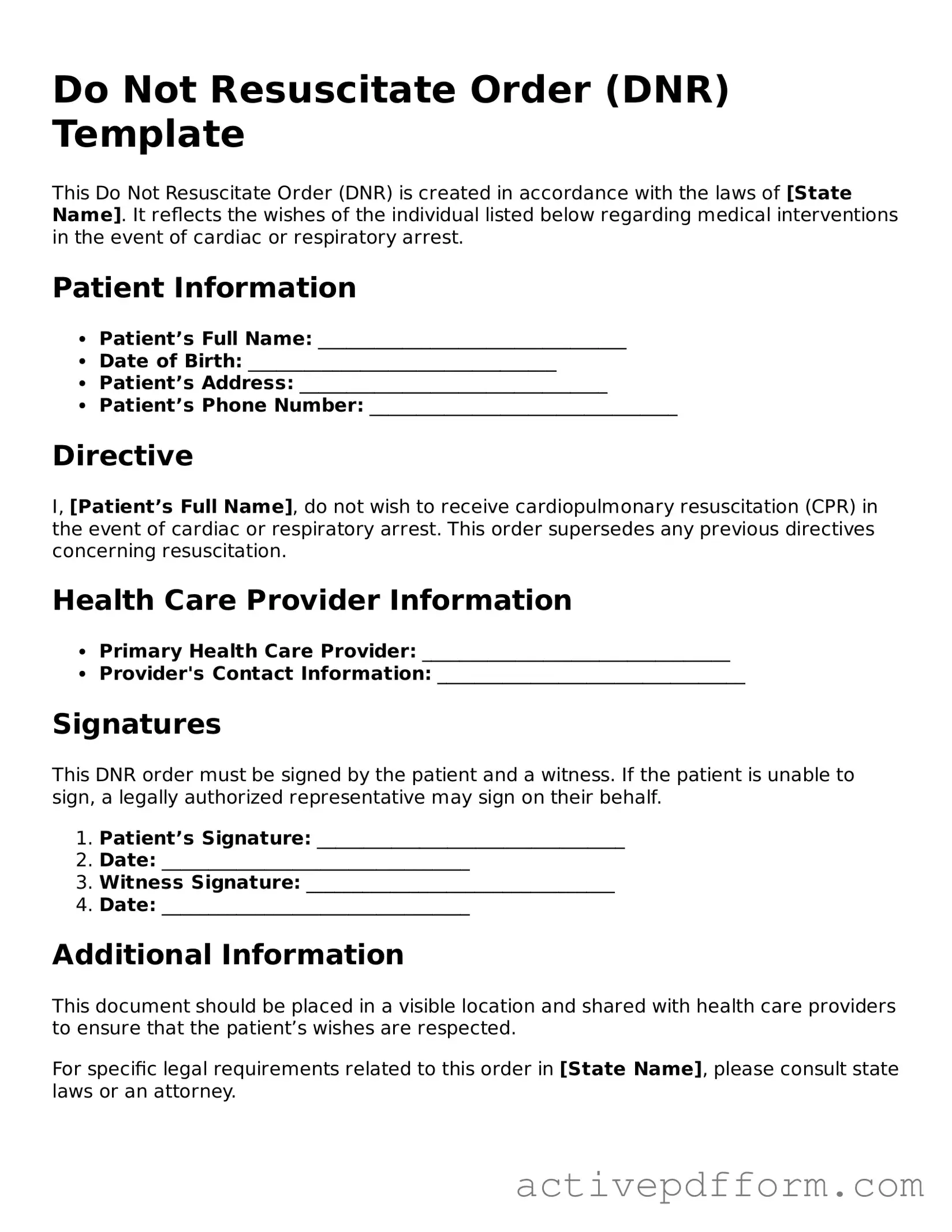What is a Do Not Resuscitate (DNR) Order?
A Do Not Resuscitate Order is a legal document that instructs medical personnel not to perform cardiopulmonary resuscitation (CPR) if a person's heart stops beating or if they stop breathing. This order is typically put in place by individuals who wish to avoid aggressive life-saving measures in the event of a medical emergency, often due to terminal illness or advanced age.
Who can request a DNR Order?
A DNR Order can be requested by the patient themselves if they are competent to make medical decisions. In cases where the patient is unable to communicate their wishes, a legally authorized representative, such as a family member or designated healthcare proxy, may request the order on their behalf.
How do I obtain a DNR Order?
To obtain a DNR Order, you will need to discuss your wishes with your healthcare provider. They can provide you with the necessary forms and guide you through the process. It is essential to have a thorough conversation about your health status and end-of-life preferences before completing the order.
Is a DNR Order valid everywhere?
While a DNR Order is generally recognized across healthcare facilities, the specific laws and regulations can vary by state. It is important to ensure that the DNR Order complies with your state’s requirements. You may want to carry a copy of the order with you, especially when traveling or visiting different healthcare facilities.
Can I change or revoke a DNR Order?
Yes, you can change or revoke a DNR Order at any time. If you decide to alter your preferences, inform your healthcare provider immediately. It’s also a good idea to ensure that any copies of the original order are destroyed or marked as revoked to avoid confusion in emergency situations.
What happens if I don’t have a DNR Order?
If you do not have a DNR Order in place, medical personnel are required to perform CPR and other life-saving measures if your heart stops or you stop breathing. This can include chest compressions, artificial ventilation, and medications. If you prefer not to receive these interventions, it is crucial to establish a DNR Order ahead of time.
Will a DNR Order affect the quality of care I receive?
No, having a DNR Order does not affect the overall quality of medical care you receive. Healthcare providers will continue to offer all other necessary treatments and interventions to manage your health condition, focusing on comfort and quality of life.
How can I ensure my DNR Order is respected?
To ensure that your DNR Order is respected, make sure to discuss your wishes with your healthcare team and family members. Keep copies of the order in easily accessible places, such as with your medical records and at home. Additionally, consider wearing a medical alert bracelet that indicates your DNR status.
